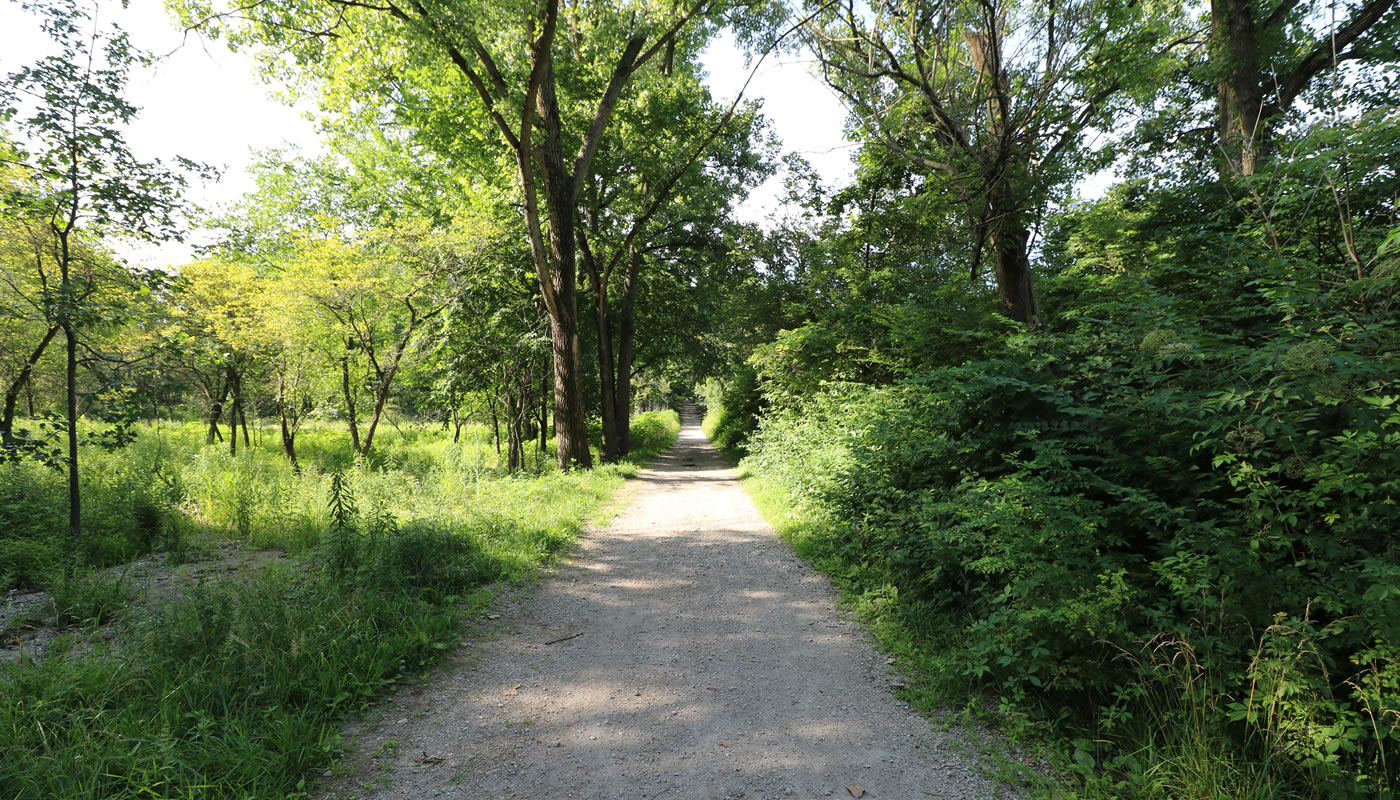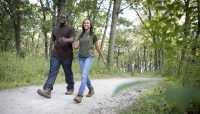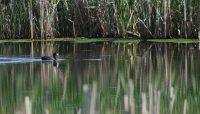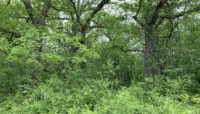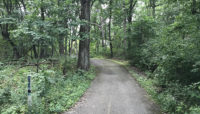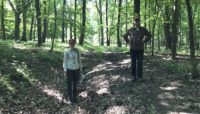Ecological restoration is the process of returning the land to health using scientific knowledge and recognized techniques to create an ecosystem that supports a diversity of native plants and animals.
On this page:
- Overview
- Planning & Tracking Progress
- Restoration Techniques
- Funding Restoration
- Current Major Restoration Projects
- Common Invasive Species
- Glossary
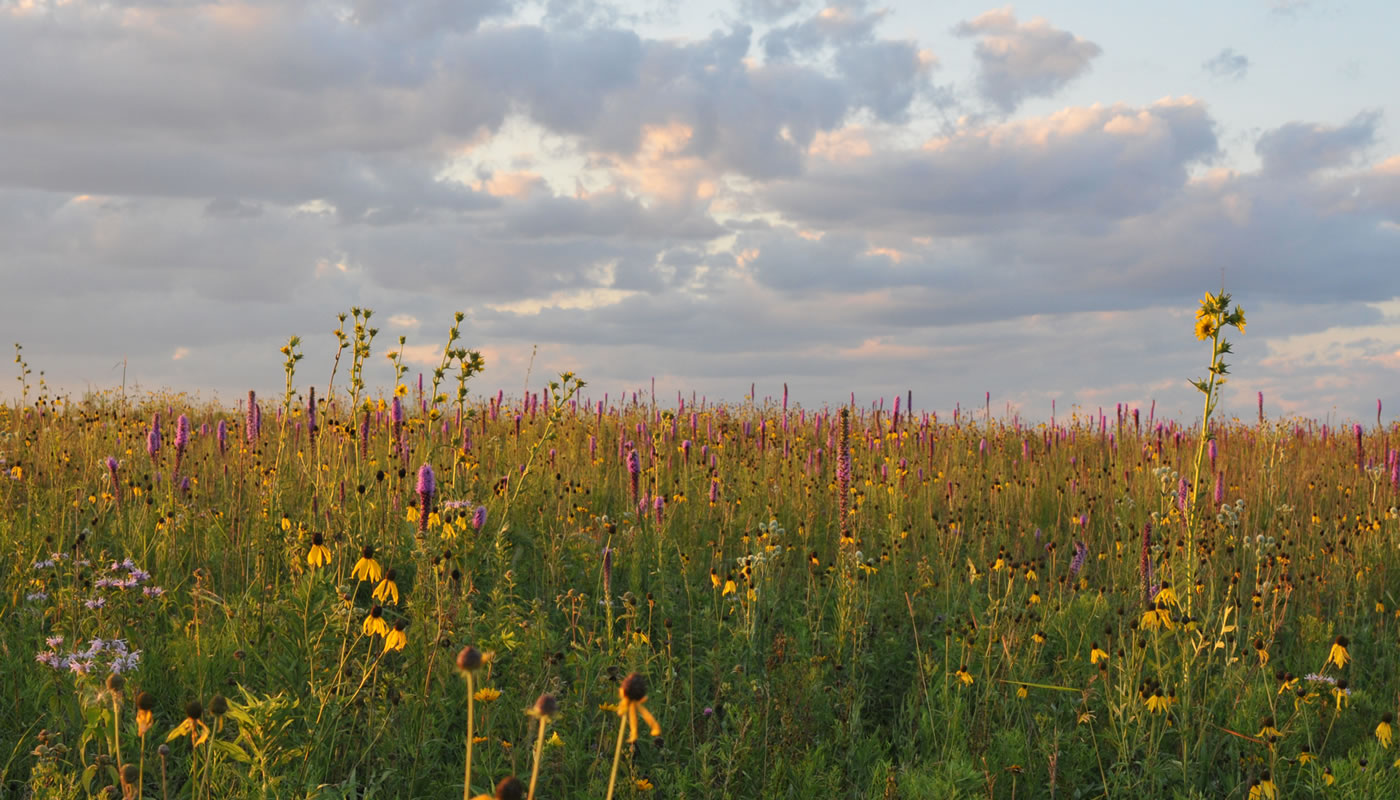
Overview
Thousands of plants and animals—including over one hundred threatened and endangered species—depend on the natural areas in the Forest Preserves of Cook County.
More than 100 years ago, determined individuals worked hard to establish the Forest Preserves, and every decade since more land has been added to be protected. Because of this foresight, you can explore a forest carpeted with spring wildflowers, a tallgrass prairie rippling in the wind or a wetland echoing with the calls of migrating birds—all in one of the most populated urban areas of the country.
Protecting nature doesn’t stop at merely acquiring land. Nature in urban areas faces constant threats from invasive plants and animals, pollution and human development. The Forest Preserves’ mission requires that we restore this land to health for future generations.
Restoration happens in many ways, and depending on the location, will have different effects. When we clear areas crowded with invasive plants, we make room for a more complex native ecosystem. Rare and important native plants can flourish, or even return to a site. Their flowers attract bees and other critical pollinating insects, which in turn provide for larger bird and animal populations. Restored areas are better for water quality, too, and more inviting for visitors.
Human Impacts in the Chicago Region
Humans and nature have never been separate—the two have always interacted. Archaeological sites located within the Forest Preserves indicate that people have lived in the Chicago region continuously for at least the past 10,000 years.
These are the lands of the Council of Three Fires—the Ojibwa, Ottawa and Potawatomi—as well as the Miami, Ho-Chunk, Menominee, Sauk and Meskwaki peoples.
Forest Preserves of Cook County Land Acknowledgement
Early Native people were nomadic, eventually transitioning to permanent and semi-permanent settlements where they hunted, gathered and established agriculture. Periodic fires set by Native Americans—to clear land, renew food resources, pursue game and more—shaped our native prairies, savannas and woodlands over millennia. (Learn more about the history of Native people in the Natural and Cultural Resources Master Plan).
But after European contact and the establishment of the United States of America, settlers and the U.S. Federal Government pushed Native people out of the area—culminating in a series of treaties between 1816 and 1833 that transferred what is now Cook County from Native groups to the U.S. Federal Government. By the 1860s, private individuals owned most of the property in Cook County.
From this transition into the current age of global trade, human interactions with nature have increasingly disrupted important ecological processes in the Chicago region:
- Humans pushed nature from sweeping, open expanses into fragmented landscapes separated by dense human development and agriculture.
- Humans introduced plants, animals and other organisms into places they weren’t normally found—in some cases these species became invasive, spreading aggressively and forcing out native plants and animals.
- Humans drained wetlands, added ditches for agriculture and covered vast areas in concrete, altering the way water moves through the land.
- Humans stopped the fires that plants and animals of the area had come to rely on.
Taken together, these impacts have thrown entire networks of native plants and animals out of balance.
Restoring Nature
Ecological restoration is the process of returning the land to health using scientific knowledge and recognized techniques to create an ecosystem that supports a diversity of native plants and animals.
Restoration does not attempt to return natural areas to some idealized state of the past. The goal is to correct or mitigate harmful human impacts and create diverse, resilient natural areas that will thrive now and in the future. These restored landscapes are important to us not just for their beauty or biodiversity, but because healthy natural areas provide essential ecosystem services, such as clean air and water, flood mitigation and recreation opportunities.
Typically, restoration efforts begin by removing invasive plants and unnaturally dense overgrowth. Woody invasives, most often buckthorn and honeysuckle, choke thousands of acres of woodland in Cook County, including throughout the forest preserves. Clearing this brush lets light return to the forest floor, allowing herbaceous vegetation like grasses, sedges and wildflowers to return.
When these growing conditions return, some native plants simply appear from “stored” seeds in the soil that finally have an opportunity to germinate and grow. Other times, people may collect and distribute seeds to augment the diversity of native herbaceous vegetation.
The reintroduction of fire to the landscape is another critical part of the restoration process. Prescribed burns—safely carried out by trained staff and private contractors, working in conjunction with volunteers and the Conservation Corps—help to stimulate the growth of native plants and hinder invasives. Simply put, native plants in this area evolved alongside periodic fires, while most invasive species introduced to this area later did not.
Brush clearing, seed distribution and prescribed fire are just a few of the techniques the Forest Preserves uses to return our natural areas to health. Some restoration efforts may require hydrology repairs—such as removing a dam or disabling agricultural drain tiles—or other interventions. Each restoration effort is unique and follows a plan.
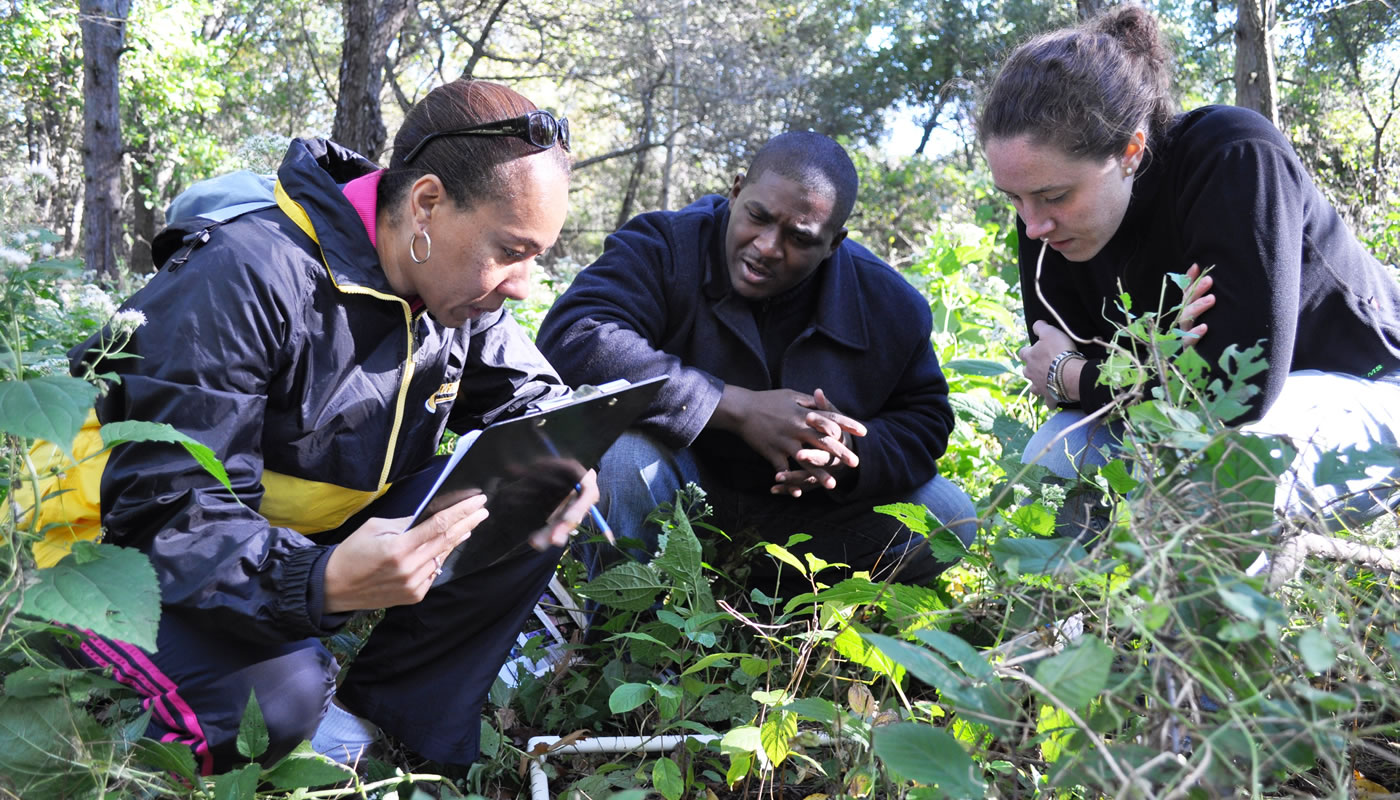
Planning & Tracking Progress
Restoration planning happens at multiple levels:
- The Forest Preserves’ overall restoration vision is outlined in our Next Century Conservation Plan (2014), an ambitious blueprint for massive restoration and expansion of protected lands. The plan calls for expanding the forest preserves to 90,000 acres, restoring 30,000 acres to high natural quality, and maintaining much of the remaining 60,000 acres in good ecological health.
- The Natural and Cultural Resources Master Plan (2015) provides the guidance needed to implement the Next Century Conservation Plan’s natural resource goals—including prioritizing where the Forest Preserves should focus restoration efforts for the first 30,000 acres.
- Major restoration projects started in the Forest Preserves follow unique project plans developed by Forest Preserves staff and project partners.
- Each location under active volunteer ecological stewardship follows a management schedule, dictating what kind of restoration work can take place. Site stewards and Forest Preserves ecologists create these plans and update them every two years.
- Beyond these planning levels, restoration is guided by other official policies and guidelines including, but not limited to:
Once restoration efforts begin at a site, tracking progress is critical. The Forest Preserves uses geographic information system (GIS) applications to map restoration work—like an area cleared of brush or burned with prescribed fire.
Forest Preserves staff also completes ecological monitoring at various stages of restoration to track changes in plant species composition and health in a specific area over time. Data from volunteer community science programs can also help show how restoration is working.
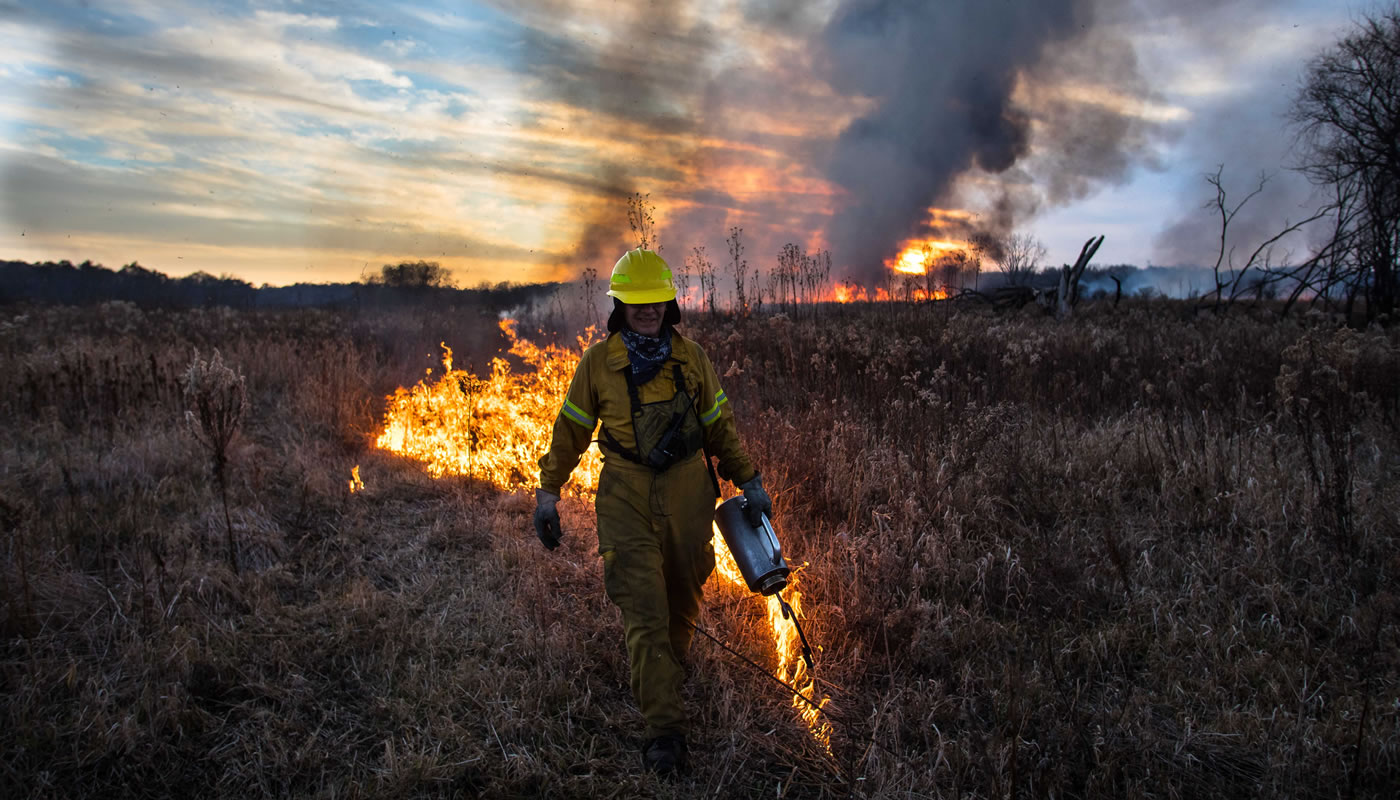
Restoration Techniques
Forest Preserves staff, private contractors, partners, volunteers and other government agencies perform restoration work in the forest preserves using a number of recognized restoration techniques.
Brush Clearing
Private contractors use forestry mowers to clear brush (usually invasive species like buckthorn and honeysuckle) for larger restoration projects. This large machinery moves over the landscape, efficiently mowing down brush while avoiding desirable trees or vegetation in the area.
Volunteers and partner groups use hand saws and loppers to clear brush on a smaller scale at volunteer ecological restoration sites. Forest Preserves staff, partners, private contractors and volunteers with proper training may also use chainsaws to clear brush.
Depending on the project, the Forest Preserves removes brush with brush pile burns or by running it through a wood chippers to produce mulch. Brush clearing generally occurs during colder months—late fall to early spring—to minimize impacts on plants and animals.
Tree Thinning
Because of years of fire suppression, even trees native to the Chicago region become invasive in some places. Trees that would not have survived periodic fires crowd areas and block light from reaching the forest floor. Some projects require tree thinning when wooded areas reach unnatural densities or when invasive tree species invade a site. The techniques for tree thinning are similar to those used for brush clearing.
Herbicide Application
Herbicides can efficiently and effectively suppress or kill invasive plants. State laws and Forest Preserves guidelines ensure that state-certified and trained staff, volunteers and contractors apply herbicide safely and in a way that minimizes adverse effects on native plants.
Herbicide is applied to stumps of cut brush to prevent re-sprouts and to treat invasive herbaceous plants.
Prescribed Burning
Periodic fires set by Native Americans—to clear land, renew food resources, pursue game and more—shaped our native prairies, savannas and woodlands over millennia. Prescribed burns carried out today emulate the historical fire regimes that have played a crucial role in influencing the ecology of fire-dependent habitats.
Under specific favorable conditions, highly trained Forest Preserves staff members, private contractors, partners and volunteers conduct prescribed burns across hundreds of acres of land each spring and fall. The numerous benefits of prescribed burning make it one of the most efficient management tools the Forest Preserves uses. Prescribed burning benefits restoration efforts by:
Prescribed burning benefits natural areas and restoration efforts by:
- Limiting the growth and spread of problematic invasive species.
- Promoting the growth and germination of important native trees, like oaks and hickories.
- Increasing light levels for native herbaceous plants including wildflowers, sedges, and grasses and their seeds within the soil so they can thrive.
- Returning the nutrients in dead plant matter back to the soil—known as nutrient cycling—more quickly.
- Increasing fruiting of native plants, providing an abundant food source for wildlife.
- Decreasing the intensity of fire and the likelihood of wildfires by reducing fuel loads.
Learn more about prescribed burning.
Native Seed Amplification
Native seeds are essential to sustaining recovering ecosystems and addressing climate challenges. They ensure the survival of plant species, support wildlife, improve soil health and maintain long-term ecological balance—forming the foundation of resilient landscapes. As plant communities continue to experience stress due to fragmentation, invasive species and changing climate, maintaining a strong supply of resilient, regionally adapted seeds is more important than ever. However, as documented in the national report An Assessment of Native Seed Needs and Capacities, shortages of native seeds for growing restoration needs could have serious consequences for Cook County and the country.
- Unsuccessful Restoration Efforts – Limited native seed availability hinders ecosystem restoration by having less diverse and more sparsely covered plant communities.
- Increased Climate Vulnerability – Ecosystems become more susceptible to climate stress when native, climate-resilient species are unavailable.
- Invasive Species Proliferation – Insufficient native plants open the door for invasive species.
- Loss of Wildlife Habitat – Native species provide essential food and shelter for wildlife; without them, animal populations face habitat degradation.
To address these challenges, the Forest Preserves of Cook County Seed Source Policy and Guidelines prioritizes use of locally sourced, genetically appropriate seed. This approach ensures that the plants are well-adapted to local conditions, increasing their resilience and ecological function.
Through the Seed Amplification Program, the Preserves expands local seed supplies, reduces reliance on commercial sources and strengthens biodiversity. The Forest Preserves is additionally targeting seed collection and storage, scaling up propagation and production, investing in infrastructure and training, seed banking and more.
Collaboration & Partnerships:
Volunteers have been the major driving force behind seed collection and the Forest Preserves also works with partners such as the Chicago Botanic Garden, conservation organizations and research institutions.
Hydrology Repair
Many forest preserves were once agricultural fields that used drain tiles to remove water from the land. To succeed, some restoration projects must change the way water moves through the land. In these cases, the Forest Preserves works to develop plans with the appropriate regulatory and permitting agencies.
Some restoration projects disable these drain tiles to let water move naturally, forming flowing streams, open ponds and swaths of wetlands.
Other hydrology repairs may include removing dams or building barriers to prevent storm water runoff from entering wetlands. Hydrology repair projects often involve partner agencies, like the US Army Corps of Engineers or Illinois Department of Natural Resources.
Deer Management
White-tailed deer are an important and highly visible part of woodlands and savannas in the Forest Preserves. But in some areas, there are more deer than a preserve can support. This deer overabundance threatens the ecological health of the Forest Preserves and leads to less healthy deer populations. The Forest Preserves has a deer management program to help restore the balance in these impacted areas.
Staff from the Forest Preserves and U.S. Department of Agriculture survey vegetation at a preserve to document the extent of deer damage and determine if there is a need for deer management. If the damage exceeds established thresholds, the Forest Preserves can request a permit through the Illinois Department of Natural Resources (IDNR) to manage deer at that preserve. The number of deer that can be removed each year at a specific preserve is directly related to the extent of the damage observed.
Each winter, public access is restricted at preserves with deer management permits. Following strict safety guidelines from the IDNR, professional sharpshooters station themselves at these sites after dusk to remove deer, continuing to visit until they have reached the limit prescribed in the IDNR permit.
Learn more about deer management.
Funding Restoration
The Forest Preserves strives to expand the scope of its restoration in the preserves, often searching for and combining funding from multiple sources to continue this important work. Restoration funding comes from:
- Forest Preserves’ Annual Budget – The Forest Preserves uses money from our annual Construction and Development budget, which is funded by property tax revenue.
- Grants – The Forest Preserves receives federal, state and local grant funding each year.
- Forest Preserve Foundation – Donations to the Foundation help fund specific restoration projects, Conservation Corps programs and the Forest Preserves volunteer program.
- Partner Support – The Forest Preserves collaborates with partners on restoration projects and programs, like the Conservation Corps.
- Mitigation Funds – Government agencies that impact natural areas through construction projects—like highway widening or work in utility right of ways—are often required to fund restoration in other locations.
Current Major Restoration Projects

Common Invasive Species
Invasive species are plants or animals that have a tendency to spread aggressively, displacing other plants or animals. Most invasive species in the Chicago region are also introduced species—plants and animals not normally found in this area. Humans, both intentionally and unintentionally, have moved the majority of these introduced invasive species to the area.
Some introduced species become invasive because they have no natural predators or competitors. They can outcompete native species, introduce new diseases or alter the existing conditions of an ecosystem.
These species are among those that are particularly destructive and often the focus of restoration efforts:
- Buckthorn
- Common buckthorn (Rhamnus cathartica)
- Glossy buckthorn (Rhamnus frangula)
- Common Reed (Phragmites australis)
- Emerald Ash Borer (Agrilus planipennis)
- Honeysuckle
- Amur honeysuckle (Lonicera maackii)
- Japanese honeysuckle (Lonicera japonica)
- Morrow’s honeysuckle (Lonicera morrowii)
- Tartarian honeysuckle (Lonicera tatarica)
- Lesser celandine (Ficaria verna)
- Mussels
- Zebra mussel (Dreissena polymorpha)
- Quagga mussel (Dreissena bugensis)
- Multiflora rose (Rosa multiflora)
- Oriental bittersweet (Celastrus orbiculatus)
- Purple loosestrife (Lythrum salicaria)
- Reed canarygrass (Phalaris arundinacea)
Note: These links will take you to Invasive.org, a joint project of The University of Georgia – Warnell School of Forestry and Natural Resources, College of Agricultural and Environmental Sciences – Dept. of Entomology, The Center for Invasive Species and Ecosystem Health, USDA Animal and Plant Health Inspection Service, The US Forest Service, USDA Identification Technology Program, USDA National Institute of Food and Agriculture.
Glossary
This glossary is adapted from the Natural and Cultural Resources Master Plan.
Biodiversity
The variety of plant and animal species in their natural environments; also, the variety of genes they contain.
Ecosystem
A community of interacting living things (plants, animals and other organisms) and their nonliving chemical and physical environment (soil, water, light and more).
Ecosystem Services
Benefits from ecosystems, such as clean water and air or recreation.
Introduced Species
Any species intentionally or accidentally transported and released by humans into an environment outside its native range. Also known as a non-native species.
Fragmentation
Breaking natural habitats into small areas separated by regions without native species.
Growing Season
The part of the year where local weather conditions allow for successful plant growth. Generally, from the last spring freeze (temperature below 32°F) to the first fall freeze. Individual species may have unique growing seasons.
Herbaceous Vegetation
Plants that do not develop woody tissue and generally persist for a single growing season.
Invasive Species
A plant or animal that has a tendency to spread aggressively, displacing other plants or animals.
Native Species
Plants or animals that are naturally part of a given area.
Woody Vegetation
A plant—usually a tree or shrub—that generates wood as its structural tissue. This woody growth generally persists through multiple growing seasons, allowing these plants to increase in size over time.

